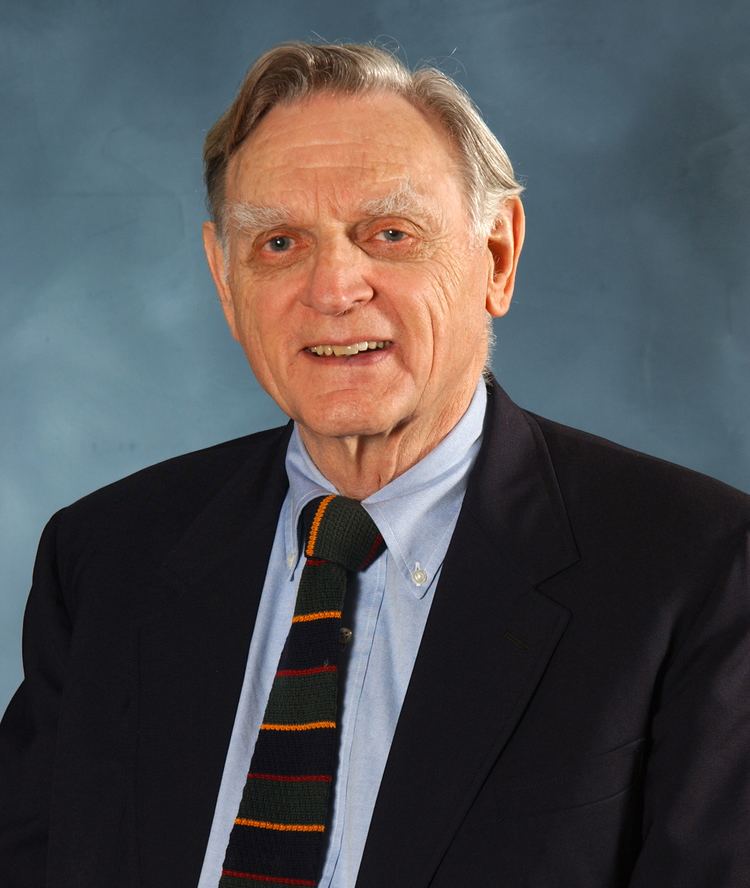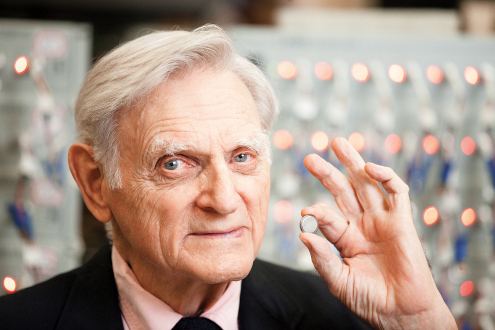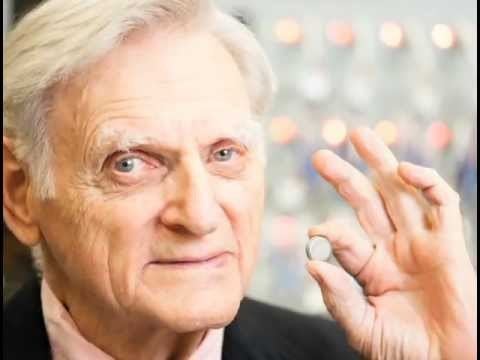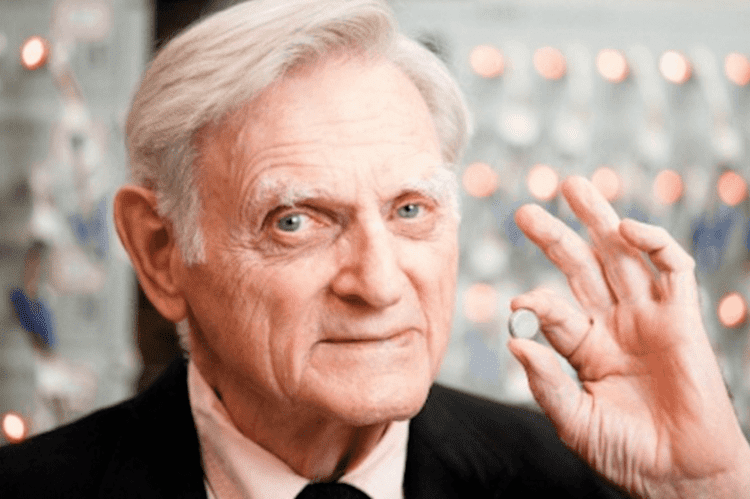Nationality American Residence Texas, United States Role Professor | Name John Goodenough | |
 | ||
Alma mater Yale UniversityUniversity of Chicago Known for Li-ion rechargeable battery, Goodenough-Kanamori rules Books Magnetism and the chemical bond, Magnetic and Other Properties of Oxides and Related Compounds Notable awards | ||
Ets15 fireside chat dr john b goodenough on energy storage and life
John Bannister Goodenough (born 25 July 1922 in Jena, Germany) is a German-born American professor and solid-state physicist. He is currently a professor of mechanical engineering and materials science at The University of Texas at Austin. He is widely credited for the identification and development of the Li-ion rechargeable battery as well as for developing the Goodenough–Kanamori rules for determining the sign of the magnetic superexchange in materials. In 2014, he received the Charles Stark Draper Prize for his contributions to the lithium-ion battery.
Contents
- Ets15 fireside chat dr john b goodenough on energy storage and life
- ECS Masters John B Goodenough
- Education
- Early career at Lincoln Laboratory
- Tenure at the University of Oxford
- Professorship at The University of Texas at Austin
- Fundamental investigations throughout his career
- Distinctions
- References

ECS Masters - John B. Goodenough
Education
Goodenough attended boarding school at Groton School before receiving a B.S. in Mathematics, summa cum laude, from Yale University in 1944, where he was a member of Skull and Bones. After serving overseas in World War II, he returned to complete a Ph.D. in Physics under the supervision of Clarence Zener at the University of Chicago in 1952.
Early career at Lincoln Laboratory

During his early career, he was a research scientist at MIT's Lincoln Laboratory. During this time he was part of an interdisciplinary team responsible for developing random access magnetic memory. His research efforts on RAM led him to develop the concepts of cooperative orbital ordering, also known as a cooperative Jahn–Teller distortion, in oxide materials, and subsequently led to his developing the rules for the sign of the magnetic superexchange in materials, now known as the Goodenough–Kanamori rules.
Tenure at the University of Oxford

During the late 1970s and early 1980s, he continued his career as head of the Inorganic Chemistry Laboratory at University of Oxford, where he identified and developed LixCoO2 as the cathode material of choice for the Li-ion rechargeable battery that is now ubiquitous in today's portable electronic devices. Although Sony is responsible for the commercialization of the technology, he is widely credited for its original identification and development. He received the Japan Prize in 2001 for his discoveries of the materials critical to the development of lightweight rechargeable batteries.
Professorship at The University of Texas at Austin
Since 1986, he has been a Professor at The University of Texas at Austin in the Cockrell School of Engineering departments of Mechanical Engineering and Electrical Engineering. During his tenure there, he has continued his research on ionic conducting solids and electrochemical devices. His group has identified LixFePO4 as a less costly cathode material that is safe for power applications such as machine tools and Hybrid electric vehicles. His group has also identified various promising electrode and electrolyte materials for solid oxide fuel cells. He currently holds the Virginia H. Cockrell Centennial Chair in Engineering.
Goodenough still works at the university at age 95, hoping to find another breakthrough in battery technology.
On February 28, 2017 Goodenough and his team at the University of Texas published a paper in the journal Energy and Environmental Science on their demonstration of a low-cost all-solid-state battery that is noncombustible and has a long cycle life with a high volumetric energy density, and fast rates of charge and discharge. Instead of liquid electrolytes, the battery uses glass electrolytes that enable the use of an alkali-metal anode without the formation of dendrites. Goodenough and colleague Maria Helena Braga hold a patent via University of Texas for solid-state electrolytes and they continue to advance battery-related research, working on several more patents.
Fundamental investigations throughout his career
On the fundamental side, his research has focused on magnetism (e.g. the Goodenough–Kanamori rules) and on the transition from magnetic-insulator to metallic behavior in transition-metal oxides. On the basis of the Virial Theorem, he recognized that this transition should be first-order and should, where the phase transition occurs at too low a temperature for atomic diffusion, result in lattice instabilities. At this crossover, these instabilities lead to charge-density waves in single-valent oxides and to phase-fluctuations in mixed-valent oxides. The phase fluctuations are responsible for such unusual physical properties as high-temperature superconductivity in copper oxides and a colossal magnetoresistance in manganese and cobalt oxides.
He also recently helped develop the glass battery, a developmental battery with a glass electrolyte that is reported to exceed current lithium-ion batteries in energy density, operating temperature range, and safety.
Distinctions
Professor Goodenough is a member of the National Academy of Engineering, the National Academy of Sciences, French Academy of Sciences, and the Real Academia de Ciencias Exactas, Físicas y Naturales of Spain. He has authored more than 550 articles, 85 book chapters and reviews, and five books, including two seminal works, Magnetism and the Chemical Bond (1963) and Les oxydes des metaux de transition (1973). Goodenough is a co-recipient of the 2009 Enrico Fermi Award. This presidential award is one of the oldest and most prestigious given by the U.S. government and carries an honorarium of $375,000. He shares the honor with Dr. Siegfried S. Hecker, professor at the Management Science and Engineering Department of Stanford University. In 2010 he was elected a Foreign Member of the Royal Society. On February 1, 2013, Goodenough was presented with the National Medal of Science. In 2017 he received the Welch Award in Chemistry.
The Royal Society of Chemistry grants a John B Goodenough Award in his honour.
